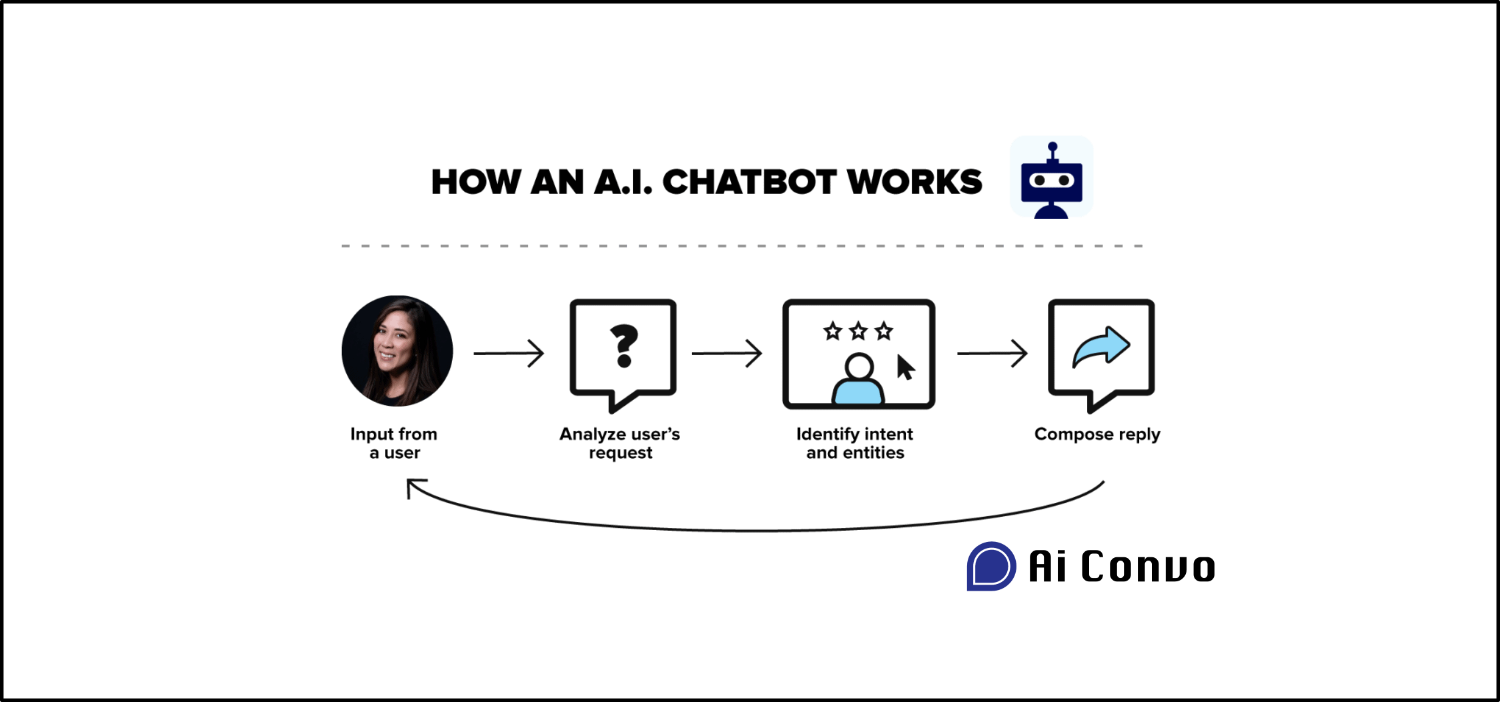Understanding Chatbots: How They Work and the Role of AI.
Chatbots have become a critical component of modern digital interactions, transforming the way businesses engage with their customers and streamline operations. But what exactly is a chatbot, and how does it work? In this blog, we will explore the fundamentals of chatbots, the mechanics behind their functionality, the essence of artificial intelligence (AI), and the learning processes that make chatbots smarter over time.
What is a Chatbot?
A chatbot is a software application designed to simulate human conversation through text or voice interactions. Chatbots can be integrated into websites, mobile apps, messaging platforms, and other digital interfaces to assist users with a wide range of tasks. These tasks can include answering frequently asked questions, providing customer support, processing orders, and even engaging in casual conversation.
How Do Chatbots Work?
The functionality of a chatbot is underpinned by several key components and processes. Here’s a closer look at how chatbots work:
- Natural Language Processing (NLP)
- Dialog Management
- Response Generation
NLP is a subfield of AI that enables chatbots to understand and interpret human language. When a user inputs a message, the chatbot uses NLP algorithms to analyze the text, identify the intent behind the query, and extract relevant information. NLP involves several steps, including tokenization (breaking down the text into individual words or tokens), part-of-speech tagging (identifying the grammatical role of each token), and entity recognition (detecting specific entities such as names, dates, or locations).
Once the chatbot has processed the user’s input, it must determine the appropriate response. This is where dialog management comes into play. Dialog management involves selecting the best response based on the user’s intent and the context of the conversation. For rule-based chatbots, this may involve matching the input to predefined scripts and triggering the corresponding response. For AI-powered chatbots, dialog management uses machine learning models to generate more dynamic and contextually relevant responses.
After determining the appropriate response, the chatbot generates a reply and delivers it to the user. This response can be in the form of text, audio, images, or even actions, such as sending a link or processing a command. The goal is to provide a coherent and helpful reply that addresses the user’s query and maintains the flow of the conversation.
What is AI?
Artificial Intelligence (AI) refers to the simulation of human intelligence in machines that are programmed to think and learn like humans. AI encompasses a broad range of technologies and applications, including machine learning, deep learning, computer vision, and natural language processing. The power of AI lies in its ability to analyze vast amounts of data, identify patterns, and make predictions or decisions based on that analysis.
AI is the driving force behind many modern technologies, from self-driving cars to personalized recommendations on streaming platforms. In the context of chatbots, AI enables these virtual assistants to understand and respond to user queries with a high degree of accuracy and relevance.
How Do Bots Learn?
The learning process for chatbots is primarily driven by machine learning, a subset of AI that focuses on developing algorithms that allow machines to learn from data. Here’s how chatbots learn and improve over time:
- Data Collection
- Training
- Fine-Tuning
- Continuous Learning
The first step in the learning process is collecting data. This data can come from various sources, including historical chat logs, customer interactions, and external databases. The more data a chatbot has access to, the better it can understand and respond to user queries.
Once the data is collected, it is used to train machine learning models. During the training phase, the chatbot is exposed to a large number of examples, allowing it to identify patterns and relationships within the data. For instance, a chatbot can learn to recognize different ways users might ask for the same information, such as “What’s the weather like today?” and “Is it going to rain today?”
After the initial training, the chatbot undergoes a fine-tuning process to improve its performance. This involves adjusting the model’s parameters, incorporating user feedback, and continuously updating the training data. Fine-tuning helps the chatbot become more accurate, responsive, and capable of handling a wider range of queries.
Chatbots are designed to learn continuously from new interactions. Each user query provides additional data that the chatbot can use to refine its understanding and improve its responses. This iterative process ensures that the chatbot remains relevant and effective in addressing user needs.
Conclusion
Chatbots represent a powerful fusion of AI and human-centered design, enabling businesses to provide efficient and personalized interactions at scale. By leveraging natural language processing, machine learning, and continuous learning processes, chatbots can understand, respond to, and learn from user interactions, making them indispensable tools in the digital age. Whether for customer support, ecommerce, or casual conversation, chatbots are poised to play an increasingly significant role in shaping the future of digital engagement.



Leave a blog comment on our Contact page.